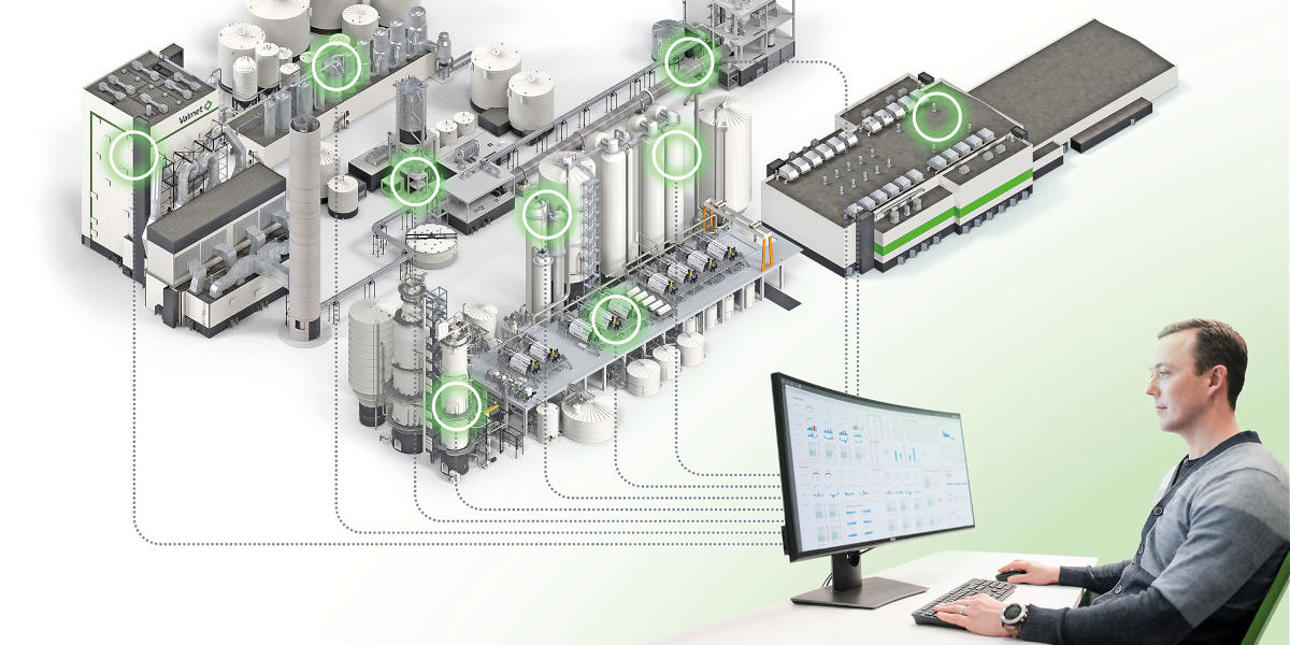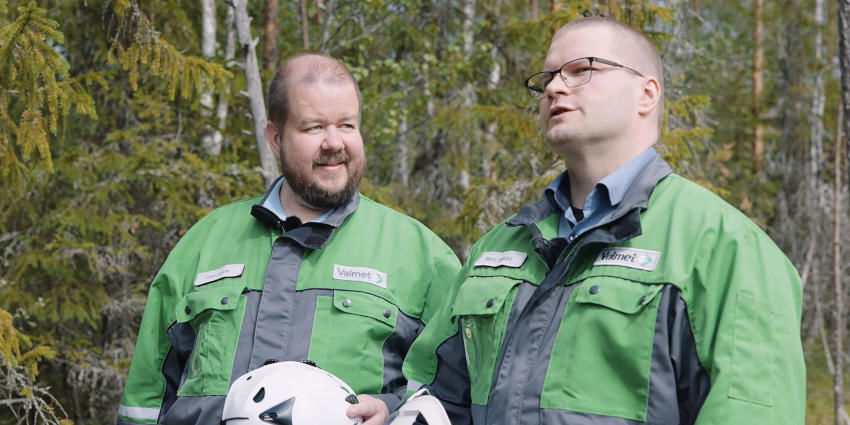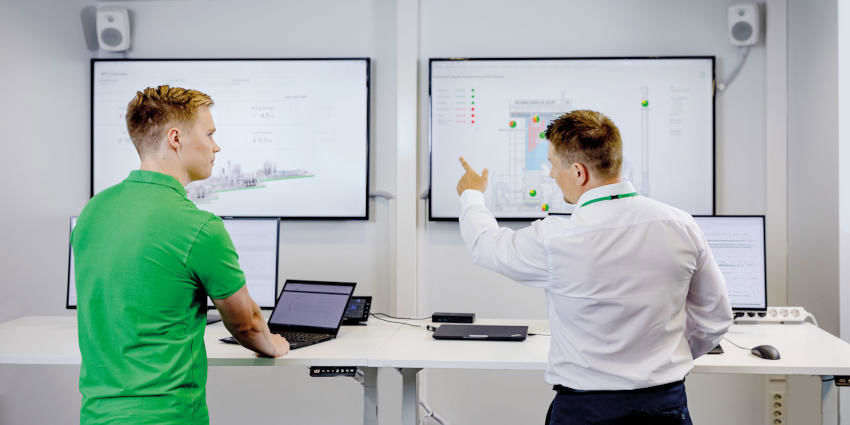The path to mill-wide optimization: Interview with Valmet experts
Dec 13, 2023
Improving mill production in both cost reduction and quality control is often compartmental. Tuning individual subprocesses helps, but taking a mill-wide view of optimization shows the true potential. We interviewed Timo Laurila and Matti Selkälä to learn more.

Why should pulp and paper mills invest in advanced process analyzers, controls and mill-wide optimization?
Timo Laurila (T.L.): Operating cost reduction targets are the most typical drivers of production control optimization. There are also specific challenges that vary from mill to mill. Some may have capacity limitations they want to overcome. Quite often, there are bottlenecks in the evaporation plant or recovery boiler that prevent the mill achieving its target production capacity. For others, the top priority is the high variability of pulp quality. All these issues can be tackled individually, but we know we can get more benefit from a mill-wide approach.
Matti Selkälä (M.S.): Take debottlenecking, for example. We’ve gotten the best results from combined fiberline and recovery line analysis and problem solving. While it’s possible to improve the performance of a given subprocess by adjusting that one area, Valmet has the solutions and insight to absolutely minimize the bottleneck from the mill. Just looking at recovery boiler performance management, for example, doesn’t reveal what’s happening upstream in the fiberline. Evaporation and boiler performance are directly impacted by the white liquor plant and fiberline operation, so if we can optimize upstream, we get better boiler capacity.
What unique solutions can Valmet offer?
T.L.: Valmet’s advanced measurements and controls for the fiberline allow mills to measure and control not only traditional parameters like Kappa and brightness but also variables like fiber properties, and how they change from cooking and the fiberline to the pulp tower. This may be unfamiliar territory for some mills, but with Valmet’s advanced measurement technologies, these fiber properties can be directly monitored and managed in real time. You can track fiber length, curl, fines and so on throughout the fiberline to ensure end-product quality is exactly on target. Fiber properties measured by the Valmet Fiberline Analyzer and fiberline optimization combine our wide range of cooking and bleaching measurements.
Reliable real-time measurements that cover every process and interaction are the foundation.
M.S.: On the recovery line side, Valmet offers unique solutions like the Recovery Ash Analyzer and Recovery Liquor Analyzer. Valmet is the only supplier with the technology to measure and analyze complete chemical recovery from the recovery boiler. We combine these measurements and combustion imaging applications with advanced process controls to enable a fully autonomous recovery boiler that does not require an operator’s input. This development is all part of Valmet’s long-term goal of helping customers achieve full autonomy at their mills. Everything we’re bringing to the market contributes to this endeavor.

Timo Laurila (left) and Matti Selkälä, Business Managers, Pulp and Energy Analyzers, Valmet.
What does mill-wide optimization mean for autonomous operation?
T.L.: We’re constantly evolving as we move toward more autonomous operations. It’s an exciting time for both pulp and paper mills and Valmet alike. Reliable real-time measurements that cover every process and interaction down to the individual fibers are the foundation here. With these data streams, we can feed Advanced Process Controls and offer Mill-Wide Optimization for autonomous mill operation.
M.S.: The measurement data creates feedback loops across the mill so a paper machine or pulp dryer can tell the fiberline what needs to change when a control parameter is not in the desired range, for example. This is how the Valmet Quality Control System works already today – data from downstream processes is translated to upstream process changes to ensure final product quality or maximize runnability.
How should mills approach end-to-end optimization?
T.L.: This is by no means an all-or-nothing endeavor. There are critical anchor points in the mill operation that need to be solid before a mill can become autonomous: cooking, bleaching, the recovery boiler and causticizing. These are the four cornerstones. They all play a key role in pulp mill operating costs and quality optimization. Stable cooking enables the fiberline to operate to predictable fiber property, pulp yield and bleachability targets. The bleaching plant finalizes pulp quality, but critically, it also determines the fiberline’s overall operating costs.
M.S.: With the recovery boiler and the whole recovery line, the objective is to extract as much value from the black liquor as possible. Second, the liquor throughput and cleanability of the recovery boiler needs to be as high as possible. If the boiler isn’t running optimally, the entire pulp and paper mill can’t run at full capacity either.
Maximizing chemical recovery significantly cuts operating costs by minimizing the need to purchase expensive cooking chemicals. Steam and electricity production from the recovery boiler, particularly with integrated mills, also plays a key role in sustainability.
Meanwhile, causticizing in the white liquor plant plays a key role in chemical and energy balance. Optimal green liquor concentration results in the maximum white liquor concentration and the high availability of the white liquor plant. This leads to stable white liquor quality, supporting a higher yield from cooking. Thanks to the minimized deadload, evaporation and recovery boiler capacity and steam production also increase.
T.L.: These four cornerstones are an excellent start when targeting higher pulp yield and quality, while minimizing external chemical and energy costs.
How does mill-wide optimization support investment decisions?
T.L.: Fiberline and recovery line operations are often run independently. Valmet bridges this gap to find the best overall production and quality operating model for the mill. You could say it’s possible to optimize and operate subprocesses according to textbook standards, but it’s only when you look at all the subprocesses in the fiberline and recovery line as a whole that you can identify and resolve production capacity and quality issues with the greatest efficacy. This includes getting the clearest picture of where real equipment limitations have been reached, and new investments are needed.
M.S.: When we do subprocess optimizations first and remove the unnecessary variability, the actual quality and results of each department are under control and available for Mill-Wide Optimization.
Take liquor throughput limitation in the recovery boiler. If this is the bottleneck, controlling causticizing, cooking, washing and evaporation production qualities will increase the recovery boiler’s liquor throughput capacity with Mill-Wide Optimization.

“It’s only when you look at all the subprocesses in the fiberline and recovery line as a whole that you can identify and resolve production capacity and quality issues with the greatest efficacy,” says Laurila.
Why choose Valmet for pulp and paper mill optimization?
T.L.: Valmet understands the entire pulp and paper mill operation, from the chip yard to the pulp tower and from black to white liquor. In practice, we’re the only supplier that can solve challenges in both pulp mill and paper machine. Our real-time analyzers and measurements, along with advanced process controls and performance solutions, address every subprocess and department in a mill.
M.S.: There’s plenty to be gained from optimizing individual processes. Where Valmet really makes a difference is in how we can also optimize the interactions between the different parts of the mill. That’s what brings total performance optimization and provides the foundation for mill autonomy.
If we change the cooking, Valmet knows the impacts through the fiberline down to the final pulp and paper quality. When we’re working on the recovery line, we know what that means for the chemical balances across the mill. Mill-wide process dynamics like chemical balance are what make Valmet stand out from the crowd.
Text Randel Wells
Valmet Mill-Wide Optimization
Valmet Mill-Wide Optimization improves overall pulp and paper mill profitability and enables production teams to make well-informed decisions across different process areas towards shared goal. The optimization observes the entire mill balance in real-time and considers both the current and future states of the mill. As a result, suboptimization of individual processes can be avoided.
